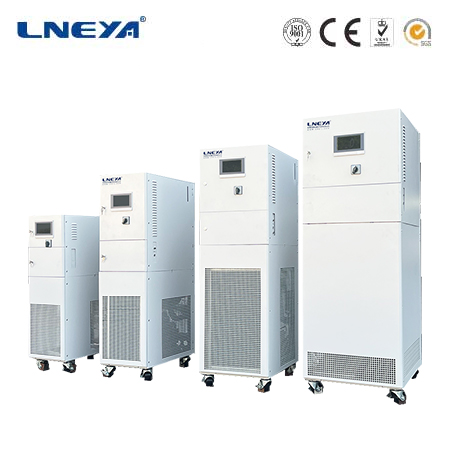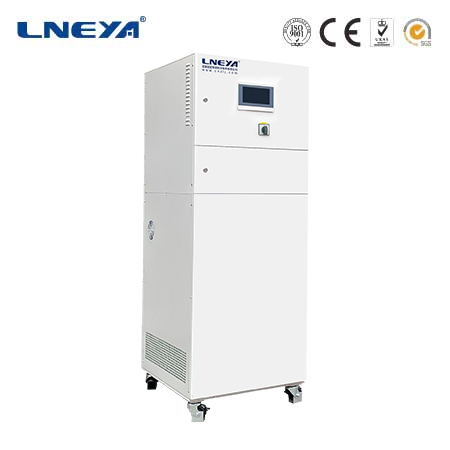circulation heater
How Circulation Heaters Work
Circulation heaters operate on the principle of heating a fluid as it continuously flows through the heater. The basic structure typically consists of a heating element, a flow chamber or tube, and necessary fittings for fluid inlet and outlet. As the fluid enters the heater, it comes into contact with the heated element. The heat is transferred from the heating element to the fluid, raising its temperature. The heated fluid then exits the heater and is circulated back to the system, either for further processing or to maintain a desired temperature in a specific application. The rate of heat transfer depends on factors such as the power of the heating element, the flow rate of the fluid, and the thermal properties of both the fluid and the materials used in the heater.

Types of Circulation Heaters
Applications: They are commonly used in various industries, including chemical processing, where they heat chemical fluids for reactions or distillation processes. In food and beverage production, electric circulation heaters are used to heat liquids such as milk, juice, or cooking oils. They are also popular in HVAC systems for heating water that is circulated through radiators or under – floor heating systems in buildings.
Gas – Fired Circulation Heaters
Working Principle: Gas – fired circulation heaters burn combustible gases, such as natural gas, propane, or butane, to produce heat. The gas is mixed with air in a burner, and the mixture is ignited. The resulting combustion releases a large amount of heat, which is transferred to the fluid through a heat exchanger. Heat exchangers in gas – fired heaters are designed to maximize the transfer of heat from the combustion gases to the fluid, often made of materials with high thermal conductivity like copper or stainless steel. The fluid flows through the heat exchanger while the hot combustion gases pass around it, absorbing the heat. Safety features, such as flame sensors and gas shut – off valves, are integrated to ensure safe operation by immediately cutting off the gas supply if the flame goes out.
Applications: These heaters are widely used in large – scale industrial applications where high – volume fluid heating is required, such as in paper mills for heating water used in the paper – making process. In the textile industry, gas – fired circulation heaters are employed to heat dyes and finishing solutions. They are also used in some commercial buildings with high heating demands, like large hotels or hospitals, for heating water for domestic use or space heating.
Immersion Circulation Heaters
Working Principle: Immersion circulation heaters are designed to be directly immersed in the fluid to be heated. The heating element is typically encased in a protective sheath, which is made of materials resistant to corrosion and heat, such as stainless steel or Incoloy. When the heater is turned on, the heating element generates heat, which is transferred directly to the surrounding fluid. The circulation of the fluid is usually achieved through an external pump, which continuously moves the fluid over the heated element, ensuring uniform heating.
Applications: Immersion circulation heaters are commonly used in applications where space is limited or where direct heating of a fluid in a tank or vessel is required. They are used in laboratories for heating small volumes of chemicals or solvents. In the pharmaceutical industry, they can be used to heat and maintain the temperature of liquid medications during production or storage. They are also used in some small – scale industrial processes, such as heating oil in storage tanks for easy pumping.
Key Factors to Consider When Choosing a Circulation Heater
Heating Capacity
Over – Sizing vs. Under – Sizing: Over – sizing a circulation heater can lead to higher initial costs, increased energy consumption, and potential inefficiencies as the heater may cycle on and off frequently. Under – sizing, on the other hand, will result in the heater being unable to heat the fluid to the desired temperature, especially during peak demand periods. It’s crucial to accurately assess your heating requirements and choose a heater with an appropriate capacity, or consult a professional for advice.
Fluid Compatibility
Material Compatibility: Different fluids have varying chemical properties, and it’s essential to ensure that the materials used in the circulation heater are compatible with the fluid being heated. For example, if the fluid is corrosive, using a heater with a stainless – steel or Teflon – coated interior can prevent corrosion and extend the lifespan of the heater. Fluids with high mineral content may cause scaling, so heaters designed for such fluids may have features like descaling mechanisms or materials that are less prone to scaling.
Viscosity Considerations: The viscosity of the fluid also plays a significant role. Highly viscous fluids require more power to be pumped through the heater and may flow more slowly, affecting the heat – transfer process. Circulation heaters designed for high – viscosity fluids often have larger channels or more powerful pumps to ensure proper flow and heating.

Energy Efficiency
Efficiency Ratings: Many regions have energy – efficiency rating systems for heating equipment. For electric circulation heaters, look for models with high – efficiency ratings, which can save on electricity bills over time. Gas – fired circulation heaters with efficient burners and well – designed heat exchangers can also reduce gas consumption. Energy – efficient circulation heaters may incorporate features such as variable – speed pumps, which adjust the flow rate of the fluid based on the heating demand, reducing energy waste.
Insulation: Good thermal insulation of the circulation heater and its associated pipes can significantly improve energy efficiency. Insulation helps to prevent heat loss to the surrounding environment, ensuring that more of the generated heat is transferred to the fluid. Heaters with well – insulated casings and pipes will operate more efficiently and consume less energy.
Safety Features
Overheat Protection: Circulation heaters should be equipped with overheat protection mechanisms. These can include thermostats that automatically shut off the heater if the temperature of the fluid or the heater itself exceeds a pre – set limit. Overheat protection helps to prevent damage to the heater, potential fires, and harm to the equipment or processes that rely on the heated fluid.
Pressure Relief Valves: In some circulation heaters, especially those operating at high pressures, pressure relief valves are essential. These valves open when the internal pressure of the heater exceeds a safe level, releasing excess pressure to prevent the heater from bursting.
Flame Safety Devices (for Gas – Fired Heaters): Gas – fired circulation heaters must have reliable flame safety devices, such as flame sensors and gas shut – off valves. These devices ensure that the gas supply is cut off immediately if the flame goes out, preventing gas leakage and potential explosions.
Installation, Operation, and Maintenance of Circulation Heaters
Installation
Location: Select a suitable location for the circulation heater. For electric heaters, ensure there is a proper electrical supply with the correct voltage and amperage, and follow local electrical codes for installation. Gas – fired heaters need to be installed in well – ventilated areas to ensure the safe discharge of combustion gases and should be connected to a reliable gas supply, with all gas connections leak – tested. The location should also allow for easy access for maintenance and servicing, and be away from flammable materials and sources of moisture.
Piping and Connections: Connect the circulation heater to the fluid supply and return lines using appropriate pipes and fittings. For fluids with high temperatures or pressures, use pipes and fittings that are rated for those conditions. Ensure all connections are tight to prevent leaks. In the case of gas – fired heaters, use gas – rated pipes and fittings, and follow the manufacturer’s instructions for gas line installation.
Electrical and Control Connections (for Electric Heaters): For electric circulation heaters, connect to the electrical supply according to the manufacturer’s instructions and local electrical codes. Install the control system properly, ensuring that all sensors, actuators, and controllers are functioning correctly. Calibrate the control system to ensure accurate temperature regulation and reliable operation.

Operation
Startup and Shutdown Procedures: Follow the manufacturer’s recommended startup and shutdown procedures. For electric heaters, this may involve turning on the power switch and setting the desired temperature. Gas – fired heaters require proper ignition procedures, which may include purging the gas lines of air before ignition. During operation, monitor the flow rate, temperature, and pressure of the fluid regularly. If any abnormal readings are detected, such as a sudden drop in flow rate or an unexpected increase in temperature, shut down the heater immediately and investigate the cause.
Adjusting Settings: Adjust the temperature and other settings of the circulation heater as per the requirements of your application. Avoid making frequent or drastic changes to the settings, as this can cause fluctuations in the temperature of the fluid and may lead to inefficient operation of the heater.
Maintenance
Regular Cleaning: Clean the interior and exterior of the circulation heater regularly. For electric heaters, this may involve removing any scale or deposits that have formed on the heating elements. Gas – fired heaters need their burners and heat exchangers cleaned to ensure efficient combustion and heat transfer. Immersion heaters should have their protective sheaths cleaned to remove any buildup of contaminants from the fluid.
Component Inspection and Replacement: Periodically inspect components such as pumps, valves, thermostats, and sensors for signs of wear, damage, or malfunction. Replace any worn – out or damaged components in a timely manner to prevent system failures. For example, if a pump is making unusual noises or not providing the required flow rate, it may need to be repaired or replaced.
Calibration: For circulation heaters with temperature – control systems, regular calibration of the thermostats and temperature sensors is important to ensure accurate temperature control. This can be done using calibrated temperature measurement devices and following the manufacturer’s calibration procedures.
Conclusion
Circulation heaters are versatile and essential heating devices with diverse applications across multiple industries and commercial settings. By understanding how they work, the different types available, key factors for selection, and proper installation, operation, and maintenance procedures, users can choose and utilize circulation heaters effectively. Whether for heating fluids in industrial processes, commercial buildings, or laboratory applications, making informed decisions about circulation heaters is crucial for achieving efficient and reliable fluid heating while ensuring safety and energy savings.
Related recommendations
energy efficient heating and cooling
373Energy Efficient Heating and Cooling: A Comprehensive GuideIn an era where energy conservation and environmental protection are of paramount importance, energy efficient heating and cooling syste...
View detailsscrew chiller manufacturers
379Screw Chiller Manufacturers: Shaping the Future of Industrial Cooling Screw chiller manufacturers are at the forefront of innovation in the global cooling solutions market, offering advanced te...
View detailslab circulators
441Lab Circulators: Vital Tools for Precise Temperature Control in Laboratories Introduction Lab circulators, also known as laboratory temperature control circulators, are essential for maintai...
View detailsuse of chiller
296Use of Chillers in the Food and Beverage IndustryFood Storage and PreservationIn food storage facilities, chillers are indispensable for extending the shelf life of perishable goods. Walk - in c...
View details
 LNEYA Thermal Test Chillers
LNEYA Thermal Test Chillers






HelloPlease log in